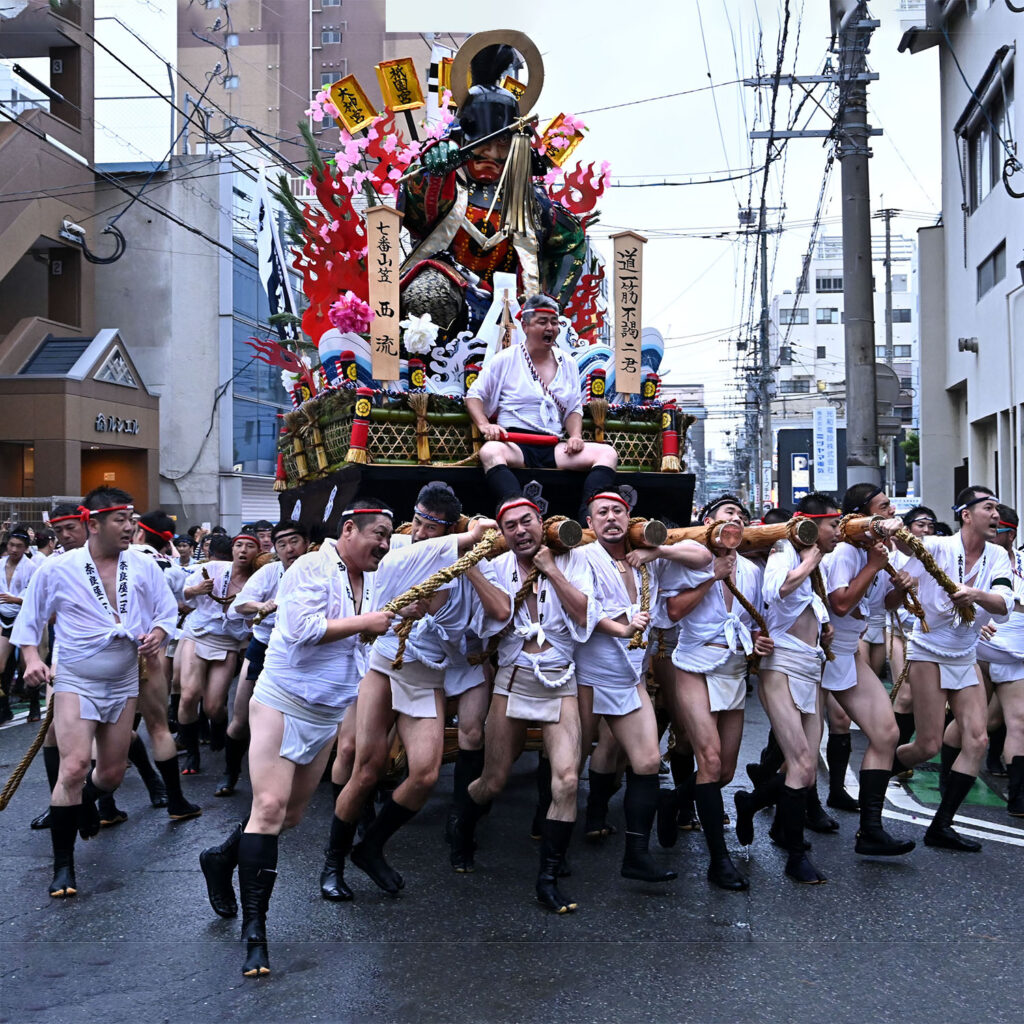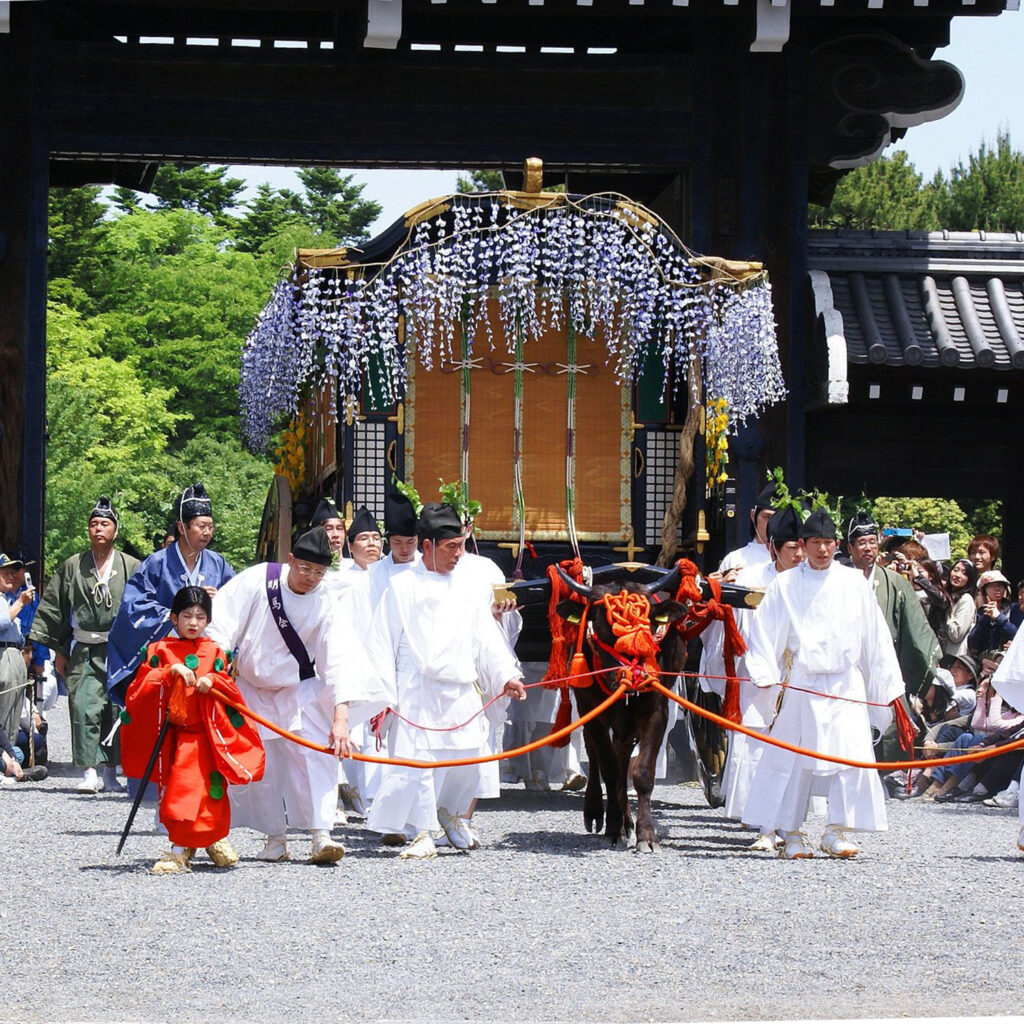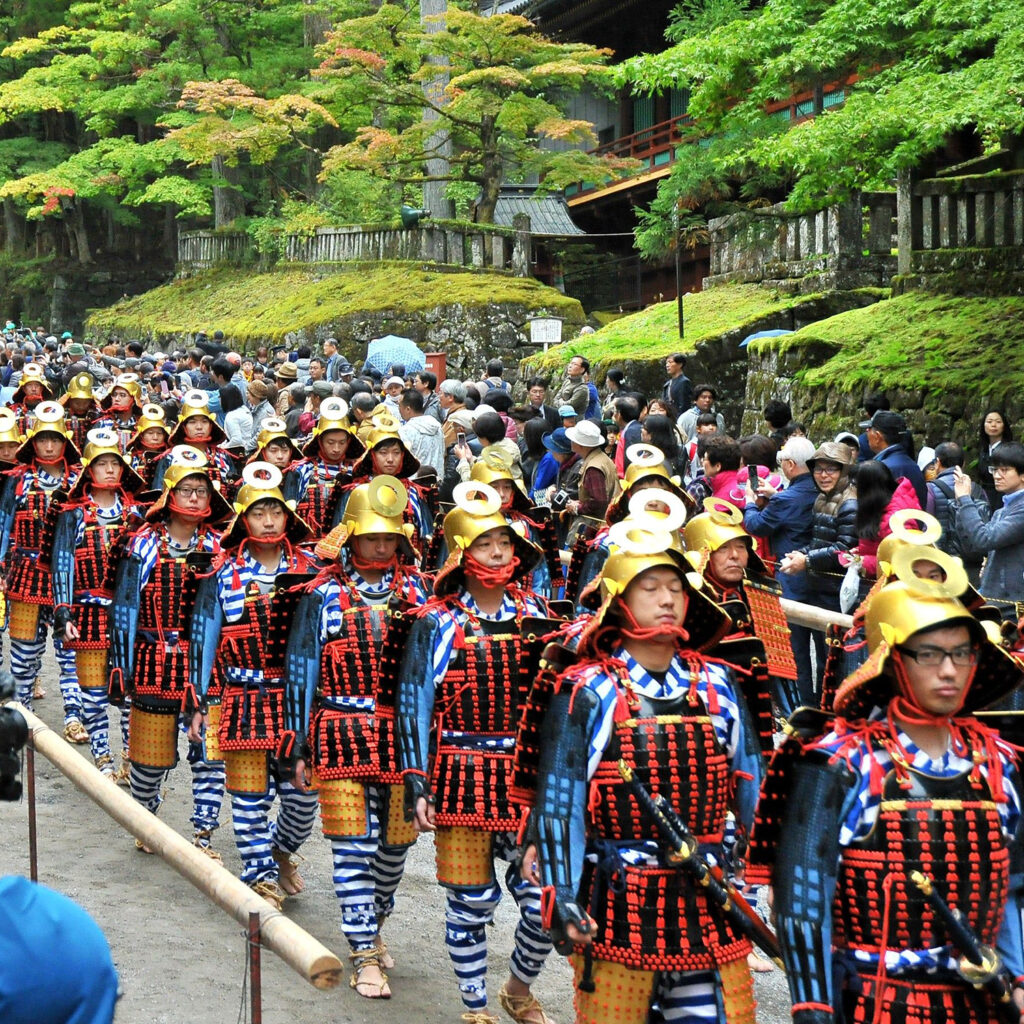HAKATA Gion Yamagasa is one of Japan’s oldest and most emblematic festivals, celebrated every year in Fukuoka, in the prefecture of the same name. This colorful and dynamic celebration is deeply rooted in the region’s history, culture and traditions.
The history of HAKATA Gion Yamagasa goes back over 750 years. It is said that the festival was initiated to appease the gods and ward off the epidemics that plagued the region at the time. Over the centuries, it has become a vital tradition, symbolizing the unity and determination of the Hakata community (the former name of the Fukuoka region) in the face of hardship.
Rituals and traditions:
The highlight of HAKATA Gion Yamagasa is the impressive parade of floats, called “yamagasa”. These richly decorated floats, several meters high, are carried by teams of participants known as “yamagasa-gumi”. Team members take it in turns to carry the heavy floats through the streets of Fukuoka, accompanied by traditional drums and flutes.
The parade takes place over a seven-day period, with special events and competitions between teams. Participants compete to display their strength, speed and coordination as they march along a predetermined route through downtown Fukuoka. The streets are filled with pulsating energy as teams race passionately to reach the finish line.
HAKATA Gion Yamagasa is more than just an annual celebration. It is deeply rooted in the culture and traditions of the Fukuoka region. The rituals and parades highlight the community’s historical heritage and reinforce the sense of local identity.
Despite social change and modern challenges, HAKATA Gion Yamagasa has managed to preserve its essential traditions. The skills needed to build the floats, the music and the traditional dances are passed down from generation to generation, ensuring the continuity of this iconic celebration.
Close-up of the Kushida-jinja
The Kushida-jinja is an important Shinto shrine located in Hakata-ku, in the city of Fukuoka, Japan. Dedicated to Amaterasu and Susanoo, the Shinto deities of the sun and the sea, this revered shrine has a history dating back to the year 757.
One of Kushida-jinja’s most famous moments is during the annual Hakata Gion Yamakasa festival. This spectacular event attracts thousands of people and takes place from July 1 to 15. Participants carry beautifully decorated floats called “yamakasa” through the streets of Fukuoka, ending at the Kushida-jinja. This shrine is where the festivities culminate in a sacred and joyous ceremony.
The Kushida-jinja is distinguished by its traditional Japanese architecture. The main building, called honden, is built in the “Nagare-zukuri” architectural style. Its two-tier, thatched roof is a unique feature that gives it an elegant and distinct aesthetic.
Inside the sanctuary, visitors can experience a peaceful and serene atmosphere. They can participate in rituals and prayers, offer amulets and wishes, and feel the deep spiritual connection that emanates from the place.
The Kushida-jinja is not only an important spiritual symbol for the local community, but also a witness to Fukuoka’s rich history. Despite social changes and the evolution of time, this sacred sanctuary has managed to preserve its traditions and cultural significance.



